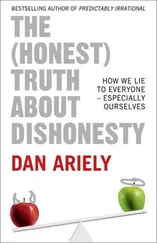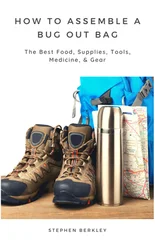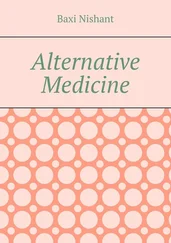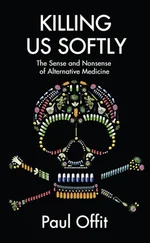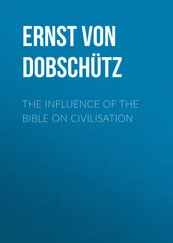Alternative therapists might be excited by a line from George Bernard Shaw’s play Annajanska, the Bolshevik Empress , in which the Grand Duchess points out: ‘All great truths begin as blasphemies.’ However, they might be less encouraged by the caveat that should accompany this line: ‘Not all blasphemies become great truths.’
Perhaps one of the best reasons to categorize a medical treatment as alternative is if the establishment views it as blasphemous. In this context, the aim of our book is to evaluate the scientific evidence that relates to each alternative treatment to see if it is a blasphemy on the path to revolutionizing medicine or if it is a blasphemy that is destined to remain in the cul‑de‑sac of crazy ideas.
2. The Truth About Acupuncture
‘There must be something to acupuncture–you never see any sick porcupines.’ Bob Goddard
An ancient system of medicine based on the notion that health and wellbeing relate to the flow of a life force (Ch’i) through pathways (meridians) in the human body. Acupuncturists place fine needles into the skin at critical points along the meridians to remove blockages and encourage a balanced flow of the life force. They claim to be able to treat a wide range of diseases and symptoms.
MOST PEOPLE ASSUME THAT ACUPUNCTURE, THE PROCESS OF PUNCTURINGthe skin with needles to improve health, is a system of medicine that has its origins in China. In fact, the oldest evidence for this practice has been discovered in the heart of Europe. In 1991 two German tourists, Helmut and Erika Simon, were hiking across an alpine glacier in the Ötz valley near the border between Italy and Austria when they encountered a frozen corpse. At first they assumed it was the body of a modern hiker, many of whom have lost their lives due to treacherous weather conditions. In fact, they had stumbled upon the remains of a 5,000‑year‑old man.
Ötzi the Iceman, named after the valley in which he was found, became world famous because his body had been remarkably well preserved by the intense cold, making him the oldest European mummified human by far. Scientists began examining Ötzi, and soon a startling series of discoveries emerged. The contents of his stomach, for instance, revealed that he had chamois and red‑deer meat for his final meals. And, by examining pollen grains mixed in with the meat, it was possible to show that he had died in the spring. He carried with him an axe made of 99.7 per cent pure copper, and his hair showed high levels of copper contamination, implying that he may have smelted copper for a living.
One of the more unexpected avenues of research was initiated by Dr Frank Bahr from the German Academy for Acupuncture and Auriculomedicine. For him, the most interesting aspect of Ötzi was a series of tattoos that covered parts of his body. These tattoos consisted of lines and dots, as opposed to being pictorial, and seemed to form fifteen distinct groups. Moreover, Bahr noticed that the markings were in familiar positions: ‘I was amazed–80 per cent of the points correspond to those used in acupuncture today.’
When he showed the images to other acupuncture experts, they agreed that the majority of tattoos seemed to lie within 6mm of known acupuncture points, and that the remainder all lay close to other areas of special significance to acupuncture. Allowing for the distortion of Ötzi’s skin in the past 5,000 years, it was even possible that every single tattoo corresponded with an acupuncture point. Bahr came to the conclusion that the markings were made by an ancient healer in order to allow Ötzi to treat himself by using the tattoos as a guide for applying needles to the correct sites.
Whilst critics have suggested that the overlap between the tattoos and acupuncture points is nothing more than a meaningless coincidence, Bahr remains confident that Ötzi was indeed a prehistoric acupuncture patient. He points out that the pattern of tattoos indicates a particular acupuncture therapy–the majority of tattoo sites are exactly those that would be used by a modern acupuncturist to treat back pain, and the remainder can be linked to abdominal disorders. In a paper published in 1999 in the highly respected journal Lancet , Bahr and his colleagues wrote: ‘From an acupuncturist’s viewpoint, the combination of points selected represents a meaningful therapeutic regimen.’ Not only do we have an apparent treatment regime, but we also have a diagnosis that fits the speculation, because radiological studies have shown that Ötzi suffered from arthritis in the lumbar region of his spine, and we also know that there were numerous whipworm eggs in his colon that would have caused him serious abdominal problems.
Despite claims that Ötzi is the world’s earliest known acupuncture patient, the Chinese insist that the practice originated in the Far East. According to legend, the effects of acupuncture were serendipitously discovered when a soldier fighting in the Mongolian War in 2,600 BC was struck by an arrow. Fortunately it was not a lethal shot, and even more fortunately it supposedly cured him of a longstanding illness. More concrete evidence for the origins of acupuncture has been found in prehistoric burial tombs, where archaeologists have discovered fine stone tools apparently intended for needling. One line of speculation is that such tools were fashioned because of the ancient Chinese belief that all disease was caused by demons within the human body. It may have been thought that the insertion of needles into the body could kill or release such demons.
The first detailed description of acupuncture appears in the Huangdi Neijing (known as the The Yellow Emperor’s Classic of Internal Medicine ), a collection of writings dating from the second century BC. It presents the complex philosophy and practice of acupuncture in terms that would be largely familiar to any modern practitioner. Most importantly of all, Huangdi Neijing describes how Ch’i , a vital energy or life force, flows though our body via channels known as meridians . Illnesses are due to imbalances or blockages in the flow of Ch’i, and the goal of acupuncture is to tap into the meridians at key points to rebalance or unblock the Ch’i.
Although Ch’i is a core principle in acupuncture, different schools have evolved over the centuries and developed their own interpretations of how Ch’i flows through the body. For instance, some acupuncturists work on the basis of fourteen main meridians carrying Ch’i, while the majority support the notion that the body contains only twelve main meridians. Similarly, different schools of acupuncture have included additional concepts, such as yin and yang, and interpreted them in different ways. While some schools divided yin and yang into three subcategories, others divided them into four. Because there are so many schools of acupuncture, it is impractical to give a detailed description of each of them, but these are the core principles:
Each meridian is associated with and connects to one of the major organs.
Each meridian has an internal and an external pathway. Although the internal pathways are buried deep within the body, the external ones are relatively near the surface and are accessible to needling.
There are hundreds of possible acupuncture points along the meridians.
Depending on the school and the condition being treated, the acupuncturist will insert needles at particular points on particular meridians.
The penetration depth varies from 1 centimetre to over 10 centimetres, and often the therapy involves rotating the needles in situ.
Needles can be left in place for a few seconds or a few hours.
Before deciding on the acupuncture points, as well as the duration, depth and mode of needling, the acupuncturist must first diagnose the patient. This relies on five techniques, namely inspection, auscultation, olfaction, palpation and inquiring . Inspection means examining the body and face, including the colour and coating of the tongue. Auscultation and olfaction entail listening to and smelling the body, checking for symptoms such as wheezing and unusual odours. Palpation involves checking the patient’s pulse: importantly, acupuncturists claim to be able to discern far more information from this process than any conventional doctor. Inquiring, as the name suggests, means simply interviewing the patient.
Читать дальше
![Edzard Ernst Trick or Treatment. The Undeniable Facts about Alternative Medicine [Electronic book text] обложка книги](/books/151762/edzard-ernst-trick-or-treatment-the-undeniable-fa-cover.webp)

